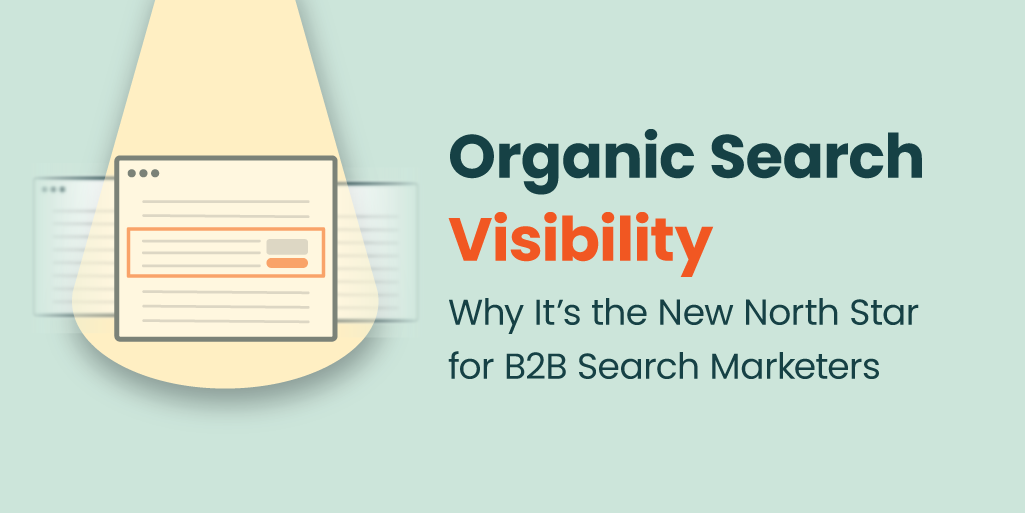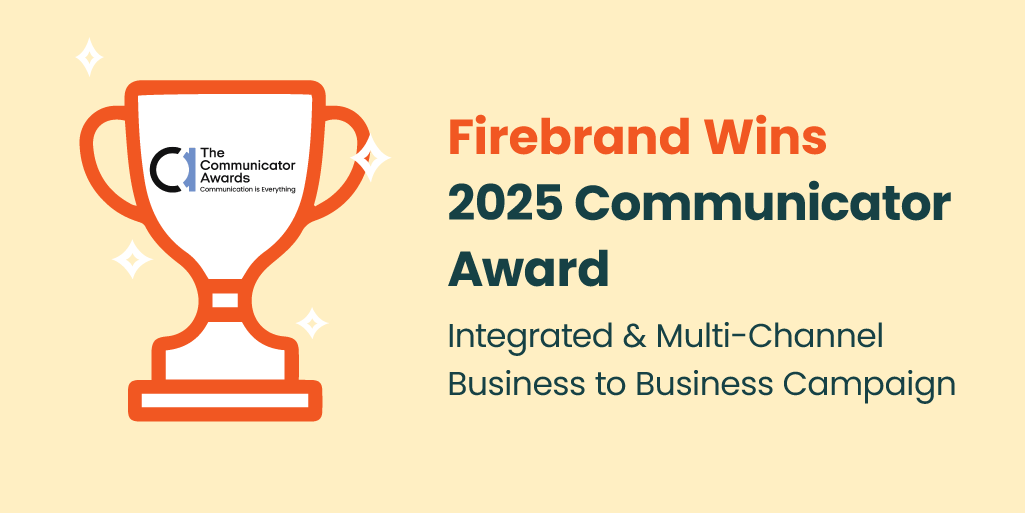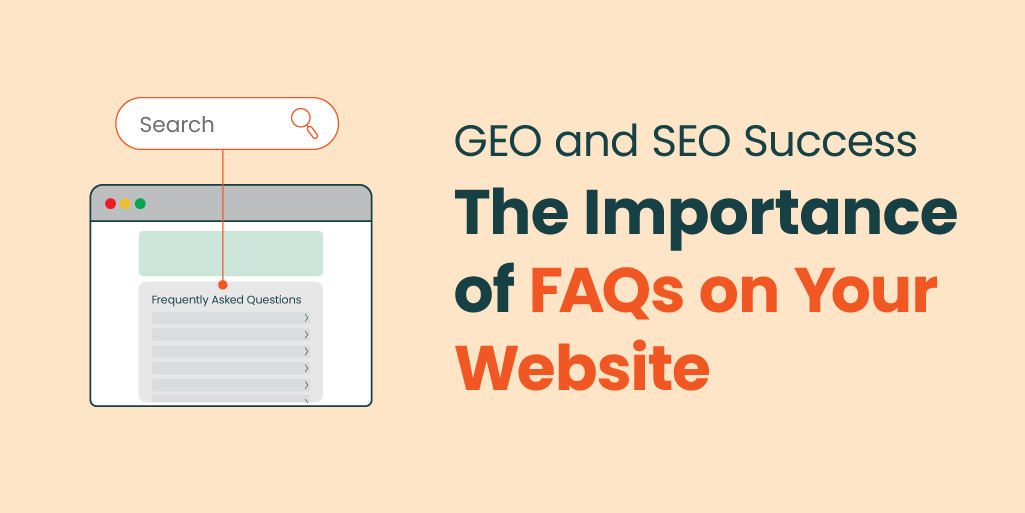The last several months have been very volatile for the organic search world. Most marketers have noticed their organic search traffic slipping and are hearing tough questions from executives who think SEO strategy or performance is to blame. But the reality is bigger than rankings or optimization tactics. Organic search traffic is declining across traditional search channels (Google and Bing), as fewer people click through to websites from search results pages. This drop isn’t about a single algorithm update — it’s the result of major shifts in how people find information.
Zero-click searches are rising as search results and AI models deliver more comprehensive answers directly to users. Also, Google’s quiet removal of the “&num=100” parameter has distorted impression data, making it harder to measure organic visibility accurately. Broader concerns about AI-generated content saturation and automation (bots or AI agents), often called the “dead internet theory,” are changing how users engage online. Together, these trends make understanding and improving organic search visibility more critical than ever.
Organic Search Visibility is the New North Star
What do we mean by Organic Search Visibility?
“Organic search visibility” is the overall discoverability — quantified in impressions — of your brand or product where people are searching, whether that’s a traditional search engine like Google or Bing, or a generative engine like ChatGPT or Perplexity. It represents all the non-paid impressions your brand earns across these platforms, whether tied to your company name, products, or related topics.
In 2025, clicks are far harder to win, and some thought leaders are going as far as to say organic clicks are essentially a vanity metric now. The priority now is to ensure your brand appears as often as possible where your target users do their research. This includes traditional SEO and its emerging counterpart, GEO (Generative Engine Optimization). Together, they define your share of the total organic impressions available in the search market.
Keep in mind that, while AI search users are rapidly growing — especially within tech-savvy B2B buyers — Google Search still dominates in global number of visits per day, according to this study by SparkToro and Datos. This means you need the right mix of SEO and GEO tactics as part of your quest for growing organic search visibility.
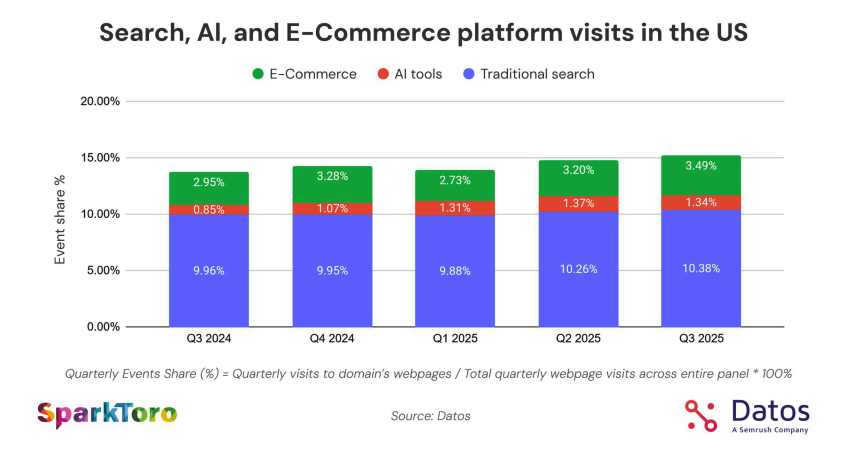
The logic is simple: the larger your brand’s share of organic visibility across all search environments, the more trusted and familiar it becomes. When users are ready to act — whether by visiting your site, filling out a form, or engaging through another channel — they’re more likely to choose the brand they’ve consistently seen and recognized across their search and research journey.
Zero-click Searches and “The Great Decoupling”
What are Zero-Click Searches?
In short, zero-click search refers to search sessions where the user obtains the answer they need without clicking through to any website. For example, the answer in Google Search appears right on the SERP (via featured snippets, AI overviews, knowledge panels), and the user stops there if they have all the information they need. This also occurs when users conduct all their searches on AI search (ChatGPT, Perplexity, etc.) and never click through to any of the websites cited. According to this report:
- Clicks to organic search results are down. 40.3% of U.S. Google searchers clicked on an organic result in March, which was down from 44.2% the prior year. 43.5% of EU/UK Google searchers clicked on an organic result in March 2025 versus 47.10% in March 2024.
- Zero-click searches are up. In March 2025, 27.2% of U.S. searches ended without a click compared to 24.4% in March 2024; for the same period in the EU/UK, zero-click searches increased from 23.6% to 26.10%.
What is The Great Decoupling?
In the world of search marketing, a phenomenon dubbed the “Great Decoupling” is playing out right now, underscoring why optimizing for organic search visibility is so vital and proving that zero-click search is VERY real.
Ahrefs recently documented that while impressions for many sites are climbing, actual clicks are dropping. What’s happening? Their data shows that the correlation between impressions and clicks switched from positive to strongly negative, meaning more people are seeing your content surface in search, but fewer are clicking through. This creates a decoupling — or alligator mouth — pattern in almost every domain’s Google Search Console data starting in early 2025:
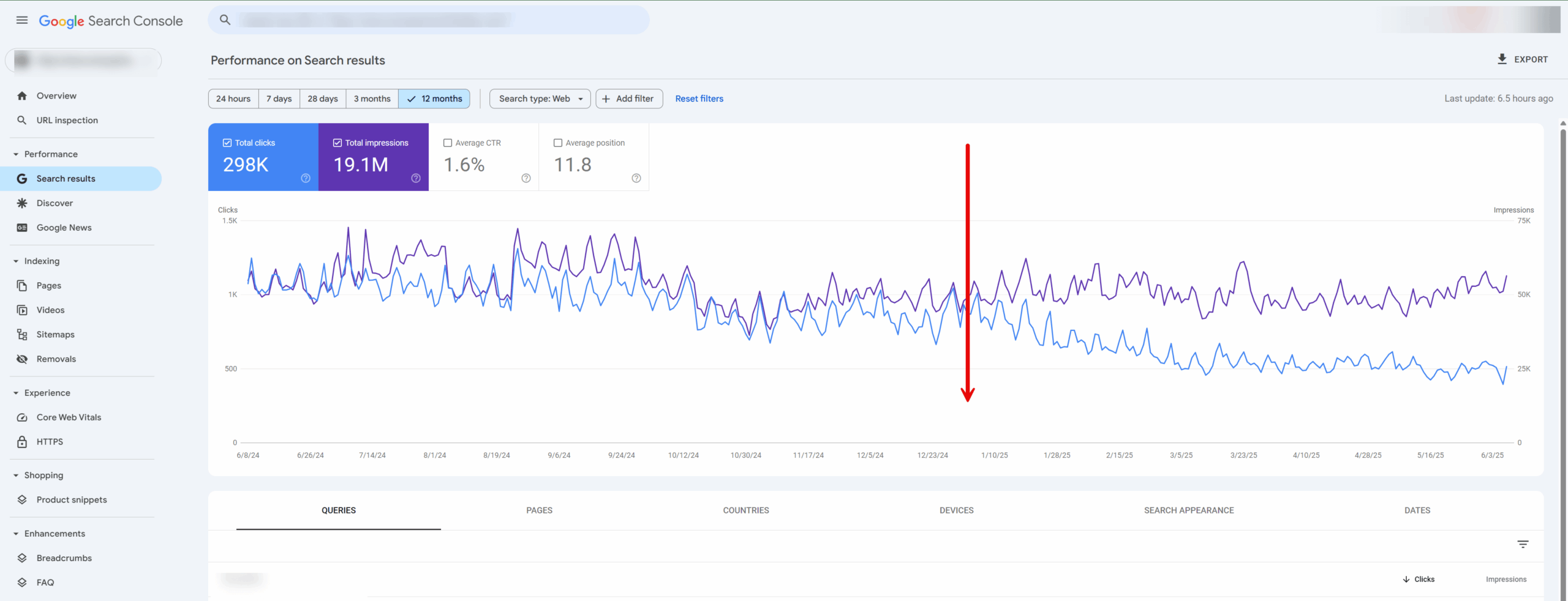
In more recent months, we are starting to see the crocodile close its mouth – meaning that impressions are coming back down in-line with clicks as more users are engaging with AI mode on Google which does not register an impression inside Google Search Console.
The Role of Google’s Removal of &num=100 and What It Means for Organic Search Visibility
In September 2025, Google quietly removed the &num=100 URL parameter, which allowed SEO tools and scrapers to pull up to 100 results per page instead of the default 10. For years, these tools artificially — and unknowingly — inflated impressions in Google Search Console, giving SEOs the impression of broader visibility than real users were actually seeing.
87.7% of sites saw a drastic drop in Google Search Console Impressions
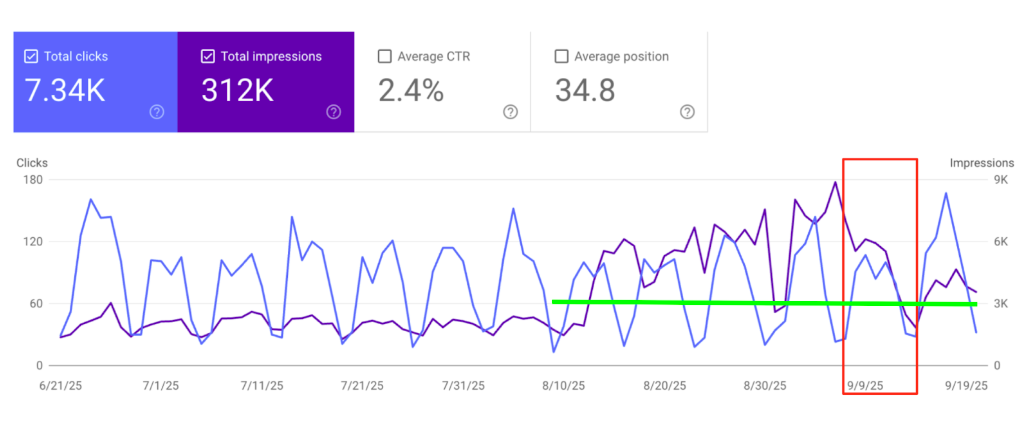
Since the change, impressions, rankings, and keyword visibility in GSC dropped sharply, but clicks remain largely unaffected. That’s because clicks come from real users engaging with top-ranking URLs, not automated bot traffic. In other words, the baseline for impression reporting has been reset, but real growth from SEO and GEO efforts continues; the drop is mostly an artifact of cleaner, more accurate data.
This underscores a key point for marketers: organic search visibility is still the main metric that matters. True visibility is about competing effectively for attention in search results, AI engines, and referenced content — regardless of the GSC impression noise that tools used to generate. Optimizing for visibility ensures your brand still reaches the right audience even as raw data from legacy tools becomes less inflated.
Why stakeholders need to understand what’s happening with organic search
Measuring success of organic search by clicks and conversions alone no longer tells the full story. Fewer clicks don’t mean no visibility. Influence is increasingly happening at the impression stage, whether through zero-click searches, AI-generated answers, or cleaner — but lower — impression reporting after changes like Google removing &num=100. When your organic visibility grows, you’ll likely see correlated growth in other channels, including direct visits, social engagement, and paid media performance. Educating leadership that these trends are structural, not just a reflection of SEO performance, is essential for setting realistic expectations and knowing where to allocate your marketing budget and resources.
Looking Ahead: Visibility as Influence
Clicks are harder to capture than ever, but this opens a new world of opportunity. By focusing on organic search visibility — earning impressions, citations, and recognition across your own domain, and trusted off-page sources — you position your brand as a trusted authority. Every mention or reference not only reaches prospects directly but also signals to algorithms and LLMs, shaping how AI and search engines surface your brand.
This also makes PR more important than ever. Securing coverage in high-quality publications generates impressions while reinforcing your authority in the sources AI models rely on. Connecting the dots between your owned content, external citations, and earned media creates a network of influence that strengthens your presence across both traditional and AI-driven search.
The brands that embrace this approach become thought leaders. By combining SEO, GEO, and PR services, you’re not just chasing clicks. You’re shaping the conversation, building recognition, and ensuring that when users are ready to engage, your brand is the first one they think of. Get in touch with us if you are looking for a partner that knows how to grow the profile of B2B tech brands in a way that positions those brands as pioneers in their industry.
About the Author
Alastair Nee is Senior Vice President of Digital Marketing at Firebrand, a B2B tech marketing agency based in the San Francisco Bay Area that helps companies grow through creative, data-driven marketing strategy. With a rare left-brain/right-brain approach, Alastair blends sharp analytics with standout creative instincts to build and scale high-performing growth marketing programs that elevate brand profiles and increases their pipeline using the channels and tactics that work best for B2B tech marketing today: GEO/SEO, AI-enhanced paid media, and advanced analytics.
At Firebrand, Alastair leads a team that partners with some of the most innovative names in tech - from AI/ML and data infrastructure to developer tools and B2B SaaS. Over his 17-year career in tech marketing, he has helped launch and grow dozens of companies, delivering award-winning campaigns recognized by The Communicator Awards and other industry benchmarks.
Alastair is a vocal advocate for modern growth marketing and emerging disciplines like AI-powered marketing technology, AI paid media optimization, and Generative Engine Optimization (GEO). His work lives at the intersection of storytelling and performance - where brand meets demand.
Follow Alastair on LinkedIn or explore his thinking on Firebrand’s blog.

